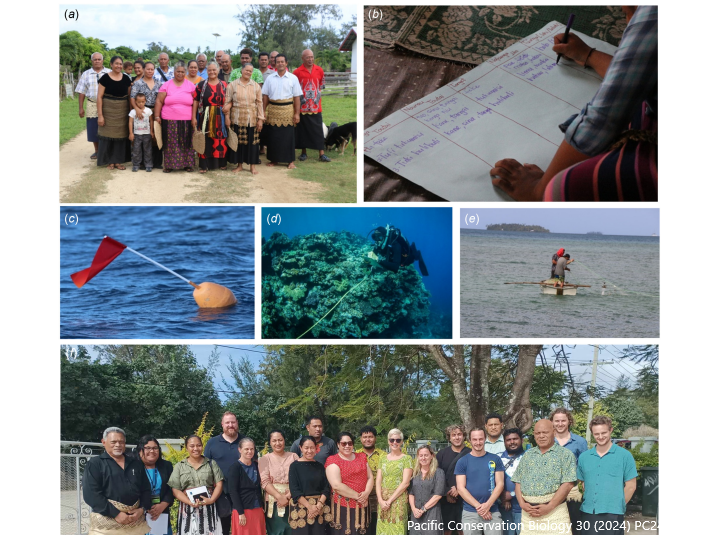
Tonga’s Special Management Areas (SMAs) have been widely supported by the people of Tonga as a successful approach to the comanagement of their fisheries and marine resources. However, due to the dominant focus on expansion of the program over recent years, challenges remain for theeffective and consistent monitoring and evaluation needed to understand program impacts. This review compiles all known ecological, fisheries, and socio-economic monitoring and evaluation reports related to Tonga’s Special Management Areas from 2010 onwards. A total of 25 projects with available reports were identified, with most examining ecological (42%) and socio-economic (42%) Handling Editor: Alan Lymbery aspects of SMAs, whereas reporting on SMA fisheries data (e.g. catch) was limited to five available projects. Most studies also represented ‘baseline’ ecological and socio-economic surveys of SMAs
during implementation. Only three studies have assessed the ecological impact of SMAs post intervention, and only one of these incorporated ‘follow-up’ surveys at a second time point. Among these, impacts remain mixed, with some SMAs resulting in larger and more abundant fish, but others showing no impact. Other monitoring challenges include no gender disaggregation of data, no
monitoring of gleaning, haphazard monitoring by communities, and general concerns of cost, fit for purpose, and overinvestment. Although the limited available ecological data indicates that SMAs can increase fish size and abundance in some cases, rationalised, more efficient, and targeted monitoring is required to better understand and strengthen the functioning of SMAs and inform community and government management decisions.












